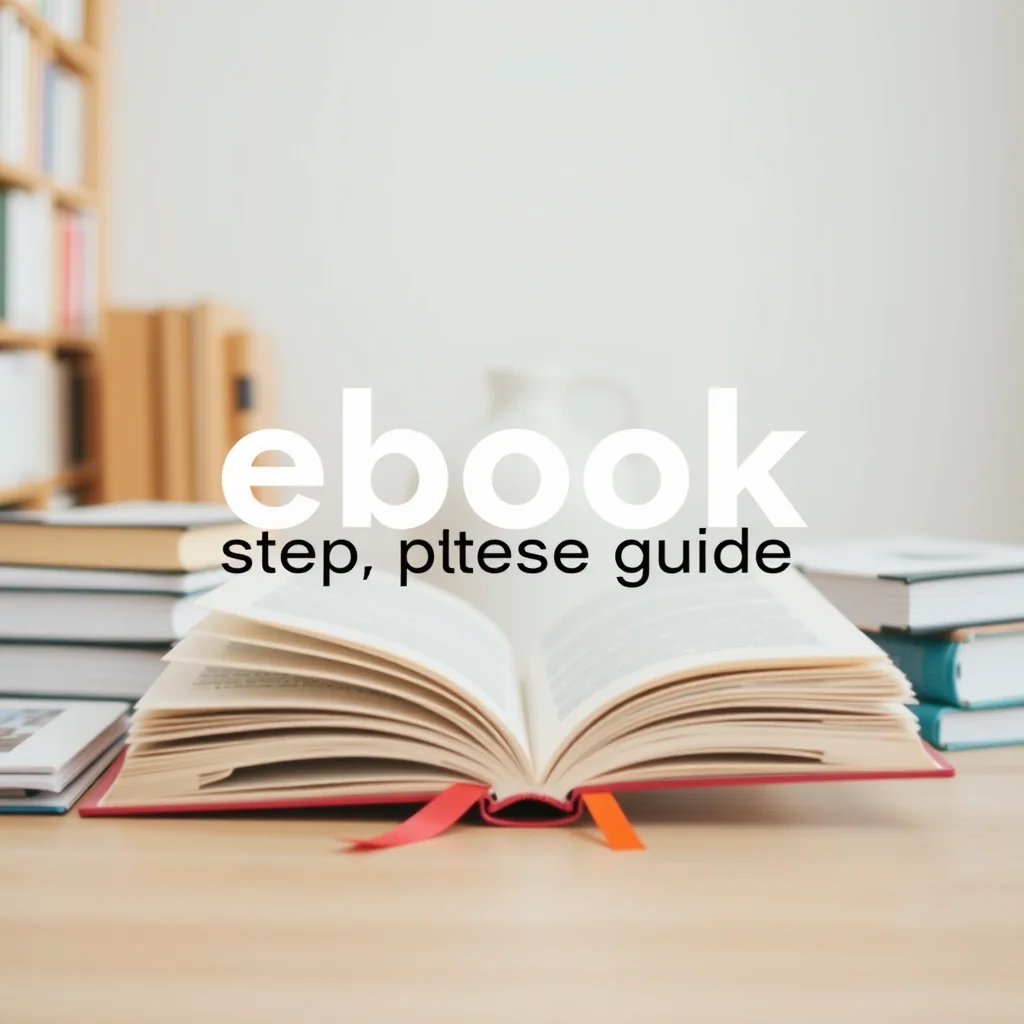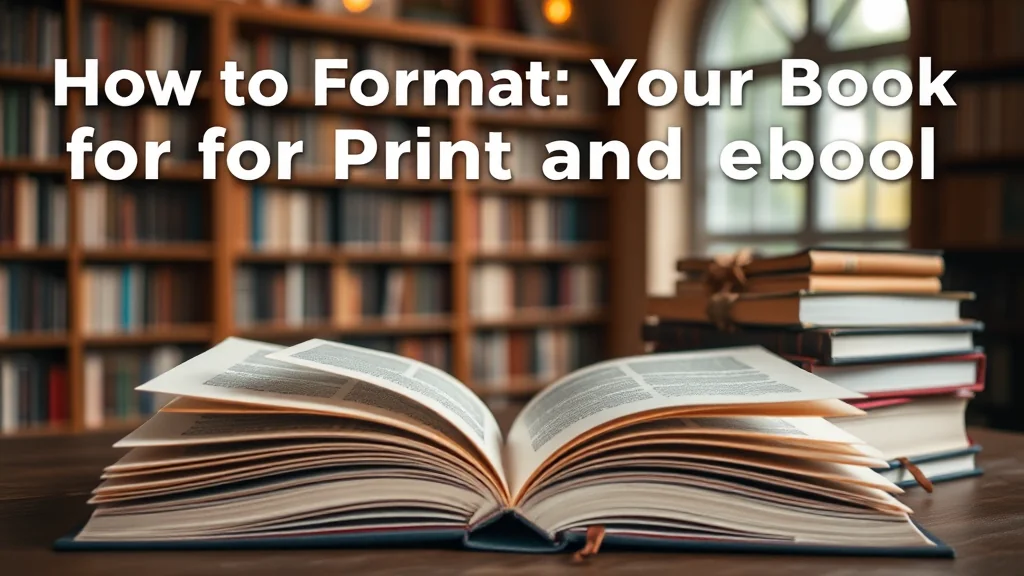- the of Book Formatting
- Concepts of Book Formatting
- Step-by-Step Formatting Process
- Tools and Resources for Formatting
- Best Practices for Successful Formatting
- Common Mistakes to Avoid in Book Formatting
- Advanced Tips and Strategies
- Real-World Examples of Successful Formatting
- Frequently Asked Questions
- Conclusion
In an era where self-publishing is more accessible than ever, aspiring authors and self-publishers must pay close attention to the formatting of their books. Whether you’re preparing your manuscript for print or as an ebook, getting the formatting right can significantly influence its success in the market. As we step into 2024 and 2025, the of book formatting continues to, blending technical precision with a keen eye for design. This guide will walk you through the essential steps to format your book for both print and digital formats, ensuring that your work stands out in a competitive marketplace.
the of Book Formatting
As the demand for ebooks and audiobooks continues to grow, with indie authors seeing increased revenue from these channels, it’s key to understand the current market trends. And get this: The rise in direct sales means that many authors now sell directly to readers, influencing their formatting choices. More than ever, book aesthetics play a big role; unique design elements such as overlays and special dust jackets are becoming increasingly popular, particularly for print editions.
In 2024-2025, successful book formatting will require a combination of technical skills, design awareness. Up-to-date industry knowledge. To For more insights, check out our guide on How to use data and analytics to boost your book sales. Here’s what you need to know about the latest trends and best practices in formatting your book.
Concepts of Book Formatting
Formatting your book involves several concepts that every author should grasp. To For more insights, check out our guide on How to Price Your Self-Published Book for Maximum Sales. And get this: These concepts include platform requirements, manuscript preparation for print. Ebook formatting essentials.
Platform Requirements
Each self-publishing platform has its own formatting guidelines. To For example, Amazon Kindle Direct Publishing (KDP) and IngramSpark have different requirements for print and ebook files. Familiarizing yourself with these guidelines early in the process can save you big time and effort, sparing you from costly revisions later on.
Manuscript Preparation for Print
Your print manuscript should be prepared. Key elements include:
- Trim Size and Margins: Choose your page size based on your target audience and genre. Set margins according to the platform’s specifications.
- Front Matter: Include essential components like a half-title page, title page, copyright page, and table of contents. Ensure they’re in the correct order.
- Chapter Formatting: Begin each chapter on a new right-facing page, using clear chapter title pages.
- Headers and Footers: Implement running headers with the author’s name or book title and include page numbers.
- Back Matter: For non-fiction, add elements such as a bibliography, author bio, and an index.
Ebook Formatting Essentials
When formatting ebooks, focus on using reflowable formats (like EPUB and MOBI). Adapt well across devices. Avoid complex layouts; instead, stick to simple headings, paragraphs, and images that can be easily viewed on various screen sizes. Plus, hyperlink your table of contents for user-friendly navigation.

Step-by-Step Formatting Process
Now that you grasp the foundational concepts, let’s into the step-by-step process of formatting your book for both print and ebook formats.
Choose the industry Right Software
Utilizing professional formatting software is essential. Tools like Vellum, Atticus, or Adobe InDesign are industry standards that streamline the formatting process for both print and ebook files. They provide templates that adhere to the required specifications and allow for easy adjustments.
Format Your Print Manuscript
Begin with your print manuscript by setting the appropriate trim size and margins. Follow the platform’s guidelines closely to ensure that your file uploads without issues. Pay special attention to your front matter, chapter formatting, headers, footers, and back matter. Each element contributes to the overall professionalism of your book.
Convert to Ebook Format
After completing your print manuscript, convert it into a suitable ebook format. Use EPUB or MOBI, keeping in mind the need for reflowable text. This is key for reader experience as it ensures that your text adjusts to different screen sizes. Here’s where it gets interesting: Remember to hyperlink the table of contents and ensure images are optimized for viewing on digital devices.
Review and Proofread
Before finalizing your files, review and proofread them. It’s advisable to preview your ebook on multiple devices and print a sample of your manuscript to check for formatting errors. This step is vital in ensuring a polished final product.
Tools and Resources for Formatting
Investing in the right tools can dramatically improve your formatting efficiency and outcome. Here are some recommended resources:
- Vellum: A user-friendly software for Mac users that allows for easy formatting of both print and ebooks.
- Atticus: A versatile tool that caters to both Windows and Mac users, offering templates for print and ebook formats.
- Adobe InDesign: A professional-grade software that provides options for customization, suitable for those with prior design experience.
- Calibre: A free tool for managing ebook libraries that also allows for file conversion and formatting.
Plus, consider leveraging freelance formatting services if you feel overwhelmed. Platforms like Fiverr and Upwork have professionals who can assist with your formatting needs.
Best Practices for Successful Formatting
To ensure your book is professionally formatted, here are some best practices to keep in mind:

- Use Professional Fonts: Choose fonts that are easy to read in both print and digital formats. Common choices include Times New Roman, Garamond, and Arial.
- Maintain Consistency: Ensure that formatting is uniform throughout the manuscript, including font sizes, line spacing, and margins.
- Test Different Devices: Always preview your ebook on various e-readers to catch any formatting issues that may arise on different devices.
- Optimize for Accessibility: Utilize readable fonts, sufficient contrast. Alt text for images in ebooks to cater to a broader audience.
Common Mistakes to Avoid in Book Formatting
Even seasoned authors can fall into formatting traps. Here are some common mistakes to steer clear of:
- Ignoring Platform Guidelines: Always double-check the formatting requirements of your chosen self-publishing platform to avoid unnecessary complications.
- Overcomplicating Design: Avoid overly complex layouts that may not translate well across devices. Simple is often more effective.
- Neglecting Proofreading: Skipping the proofreading step can lead to embarrassing errors that detract from your book’s professionalism.
- Forgetting Metadata: Properly optimizing metadata is key for discoverability. Don’t overlook this essential aspect of your book’s formatting.
Advanced Tips and Strategies
If you’re looking to go beyond basic formatting, consider these advanced tips:
- Incorporate Interactive Elements: For ebooks, consider adding interactive elements such as hyperlinks to external resources or embedded multimedia content.
- Utilize Book Design Templates: Many professional formats come with design templates that can save you time while ensuring a polished look.
- Experiment with Print Features: options like sprayed edges and illustrated overlays for print editions to create unique and collectible versions of your book.
Real-World Examples of Successful Formatting
Many successful self-published authors attribute their success to professional formatting. To For example, author Joanna Penn has emphasized the importance of quality formatting in her books. Have garnered positive reviews and sales. Similarly, author Mark Dawson has on how his clean and professional formatting has contributed to his widespread readership.
These authors demonstrate that investing time in proper formatting not only enhances the reader experience but also boosts sales and credibility in the competitive self-publishing.
Frequently Asked Questions
What software do I need to format my book?
The most commonly used software for formatting books includes Vellum, Atticus. Adobe InDesign. Each offers unique features suited for both print and ebook formats.
How do I ensure my ebook is compatible with all devices?
Use reflowable formats like EPUB or MOBI and test your ebook on various devices, including Kindles, tablets. Smartphones, to ensure compatibility.
What are the best practices for print book formatting?
Maintain consistent formatting throughout, use professional fonts, and adhere to the guidelines provided by your chosen self-publishing platform.
Conclusion
Formatting your book for print and ebook formats in 2024-2025 requires a careful balance of technical skill and design awareness. By following the steps and best practices outlined in this guide, you can ensure your manuscript shines in a crowded marketplace. As you prepare your book, remember the importance of aesthetics, metadata optimization, and adherence to platform guidelines. Take your time, invest in the right tools, and don’t hesitate to seek professional amplify when needed. With the right approach, your book won’t only be well-formatted but also ready to captivate readers across the globe. Start your formatting journey today and set your book up for success!




